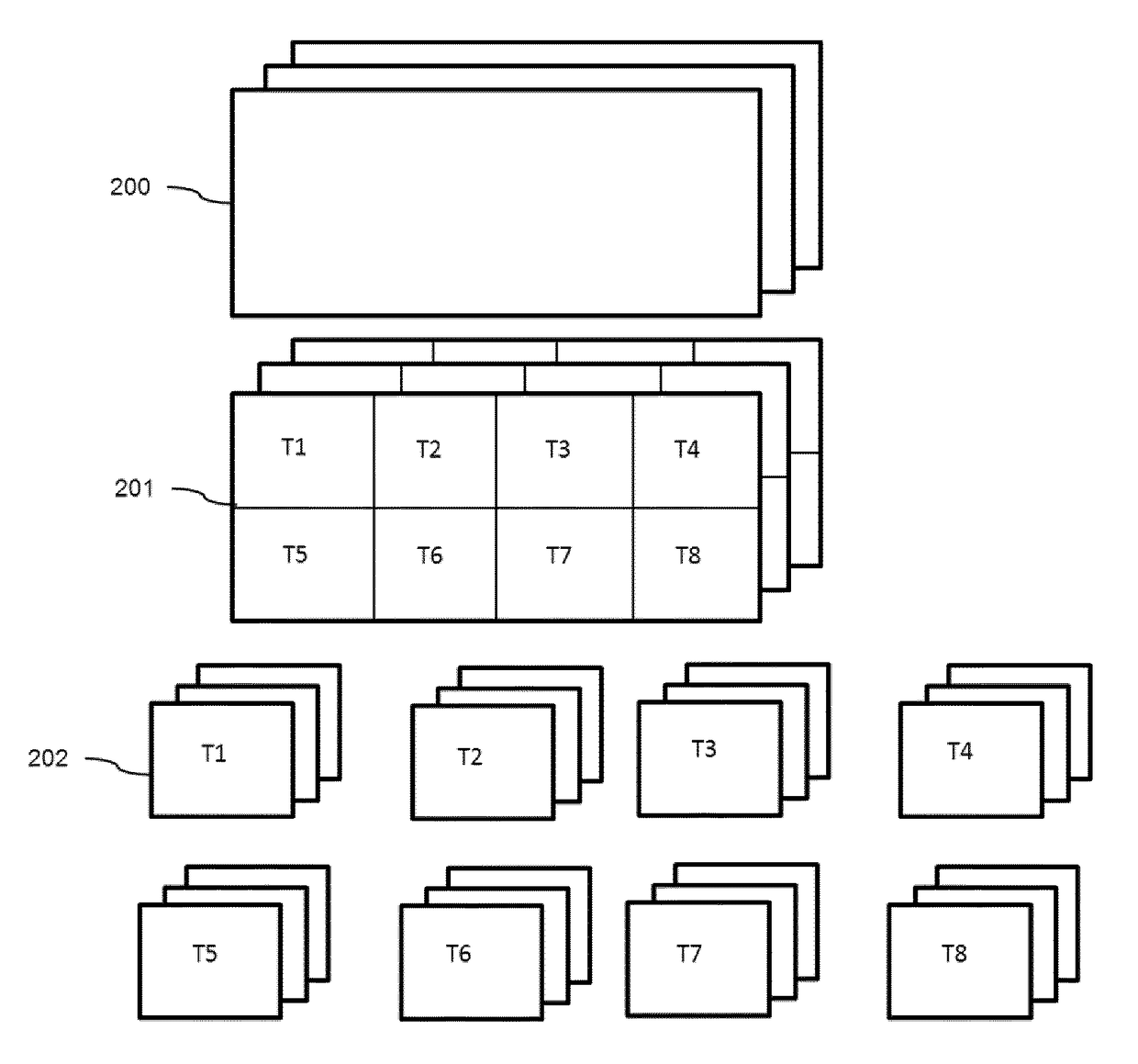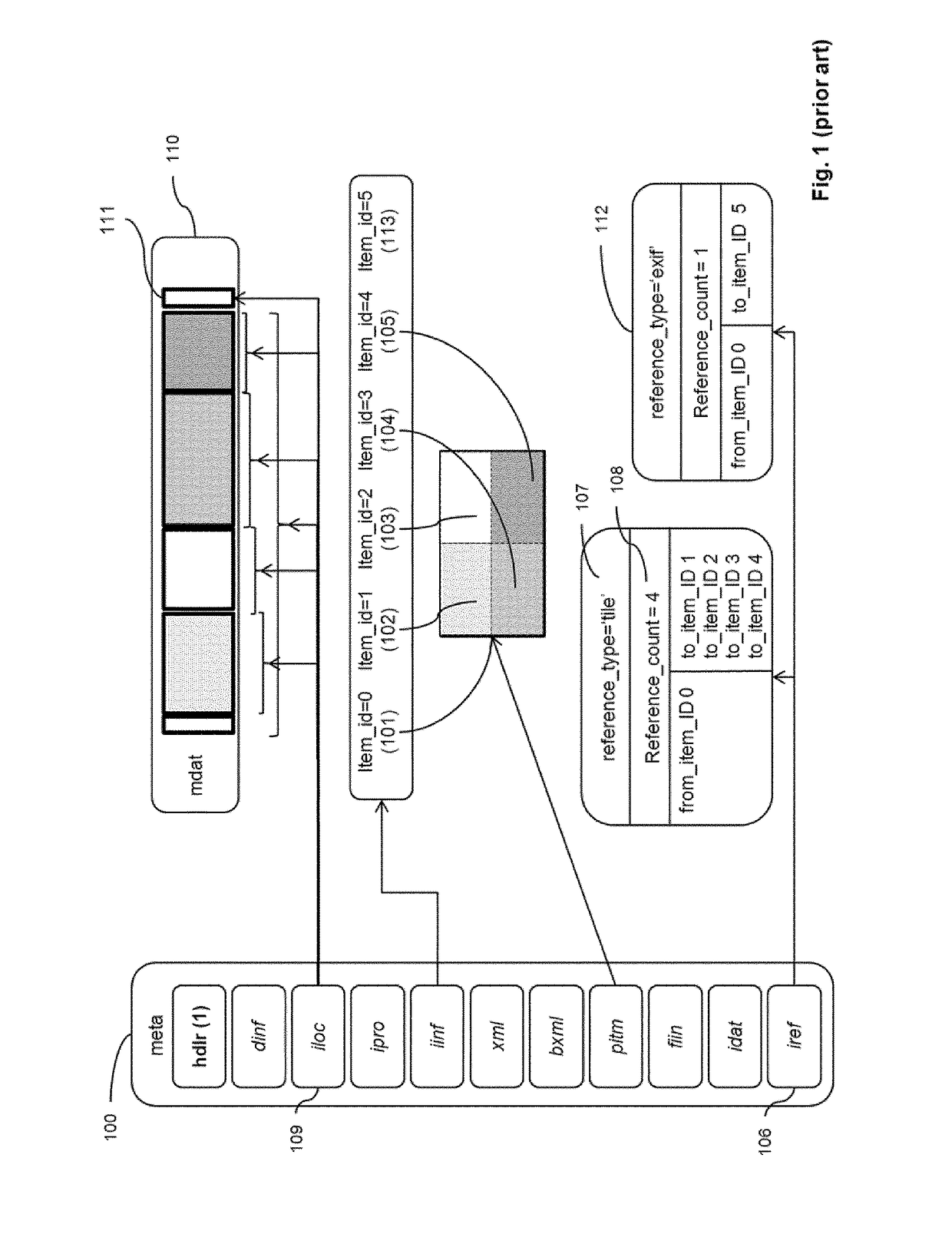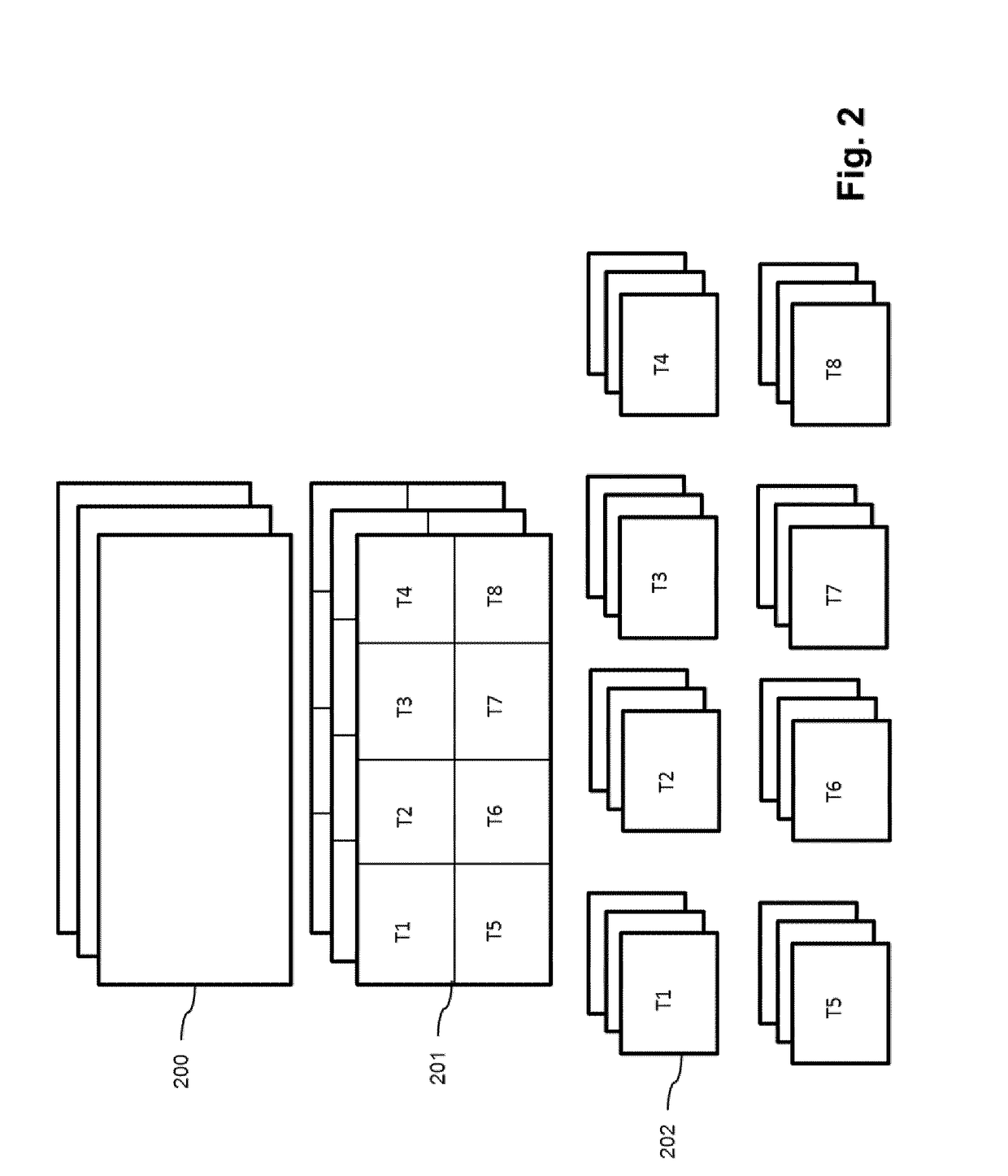Image data encapsulation
a technology of image data and encapsulation, applied in the field of image data storage, can solve the problems of complex selection and extraction of tiles from coded pictures stored in file format, cannot be used in still image file format when using the ‘meta’ based approach, etc., and achieve the effect of easy identification, selection and extraction of tiles
- Summary
- Abstract
- Description
- Claims
- Application Information
AI Technical Summary
Benefits of technology
Problems solved by technology
Method used
Image
Examples
Embodiment Construction
[0184]In what follows, embodiments of the invention are described.
[0185]In order to better understand the technical context, video tiling is explained with reference to FIG. 2 which shows a video (200) having consecutive temporal frames. Each frame (201) is divided into 8 portions (here rectangular portions) referred to as “tiles” T1 to T8. The number and the shape of the tiles can be different. In what follows, it is considered that the tiling is the same whatever the index of the video frame.
[0186]The result of this tiling is 8 independent sub-videos (202). These sub-videos represent a partition of the whole global video. Each independent sub-video can be encoded as an independent bitstream, according to the AVC or HEVC standards for example. The sub-video can also be part of one single video bitstream, like for example tiles of the HEVC standard or slices of the AVC standard.
[0187]The HEVC standard defines different spatial subdivision of pictures: tiles, slices and slice segment...
PUM
 Login to View More
Login to View More Abstract
Description
Claims
Application Information
 Login to View More
Login to View More - R&D
- Intellectual Property
- Life Sciences
- Materials
- Tech Scout
- Unparalleled Data Quality
- Higher Quality Content
- 60% Fewer Hallucinations
Browse by: Latest US Patents, China's latest patents, Technical Efficacy Thesaurus, Application Domain, Technology Topic, Popular Technical Reports.
© 2025 PatSnap. All rights reserved.Legal|Privacy policy|Modern Slavery Act Transparency Statement|Sitemap|About US| Contact US: help@patsnap.com



